Abstract
Five selective media for the detection and enumeration of coagulase-positive staphylococci were evaluated for their efficiency in the recovery of 17 strains of coagulase-positive staphylococci from foods. They were Staphylococcus Medium 110 (SM-110), tellurite-glycine-agar (TGA), egg-tellurite-glycine-pyruvate-agar (ETGPA), tellurite-egg-agar (TEA), and tellurite-polymyxin-egg yolk-agar (TPEY). Statistical analysis by the rank correlation method of the efficiency with which these media recovered staphylococci from pure 24-hr Brain Heart Infusion cultures revealed the following efficiencies in descending order: (i) TPEY, (ii) ETGPA, (iii) TGA, (iv) TEA, (v) SM-110. Growth of 17 strains of coagulase-negative cocci on these media showed the following approximate descending order of inhibition to these organisms: (i) ETGPA, (ii) TEA, (iii) SM-110, (iv) TGA, (v) TPEY. The appearance of colonies of the various coagulase-negative strains on each medium was studied for the degree to which they could be confused with colonies of coagulase-positive strains. Nineteen food contaminants, including Proteus vulgaris, Bacillus sp., Escherichia coli, Erwinia sp., fecal streptococci, and others, were also studied for similarities in appearance to staphylococci and for ability to grow on the selective media. The influence of five sterile food homogenates (frozen chicken and tuna pies, custard, smoked ham, and raw whole egg) on recovery of 1,500 enterotoxigenic staphylococci (three strains) per milliliter was determined by statistical analysis. Three main effects (culture, media, and food) and three interactions (media with food, food with cultures, and media with culture) were found to be significant. Recovery on TPEY was influenced less by food than the other selective media and showed optimal recovery ability from sterile custard, eggs, and ham. TGA recovered well from sterile chicken pie and custard, SM-110 from sterile custard, and TEA from sterile ham. None of the media was outstanding in recovering staphylococci from tuna pie. The ability of the five selective media to recover 1,500 enterotoxigenic staphylococci (three strains) per ml from three sterile foods in the presence of 10 strains of contaminating bacteria added at the 0, 105, and 106 levels per milliliter was also studied and analyzed statistically. Only three factors were significant under these conditions—cultures, foods, and the interaction of media with the level of added contamination. Efficiency of recovery of TGA, SM-110, and ETGPA was found not to be dependent upon the level of contamination. Recovery on TPEY decreased with increases in the number of contaminants. TEA increased in efficiency at the 105 level, but decreased at the 106 level. When recovery on Trypticase Soy Agar was considered to be 100%, the average percentage of recovery by each of the selective media under all experimental conditions was determined.
Full text
PDF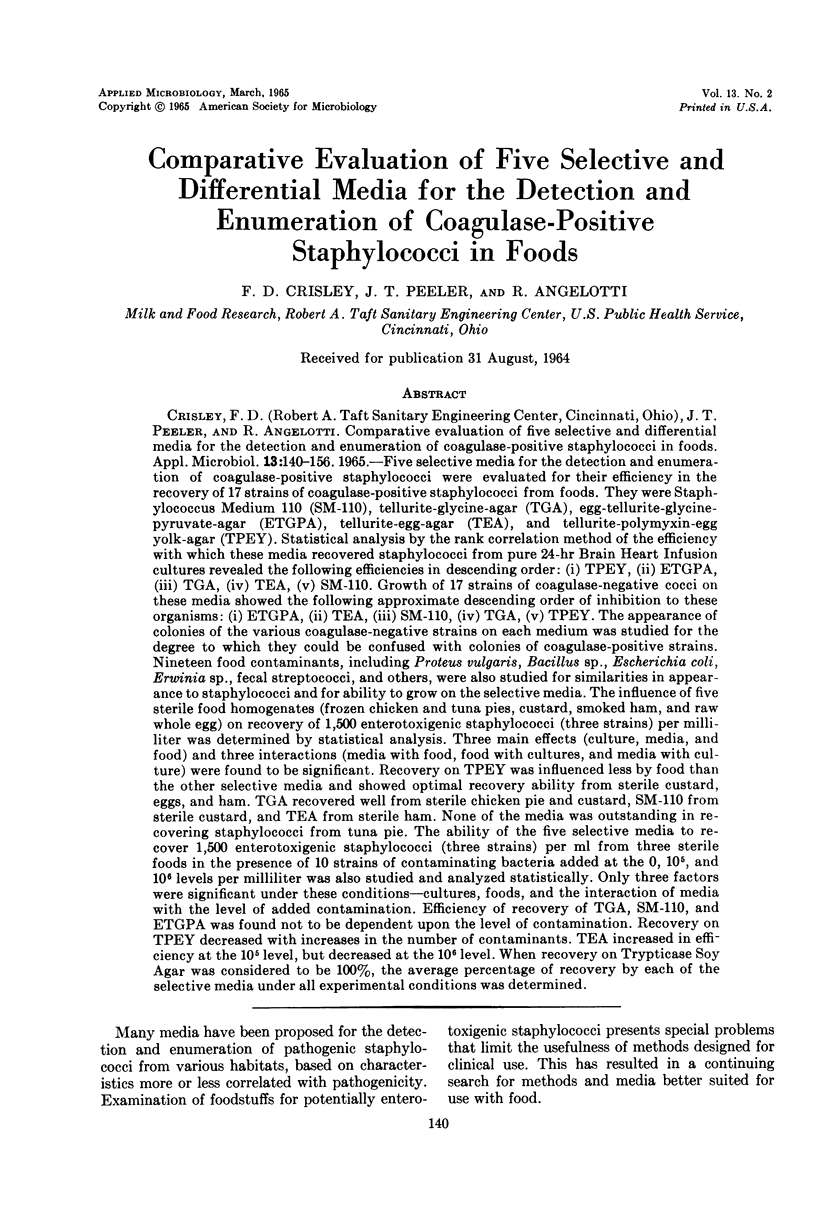

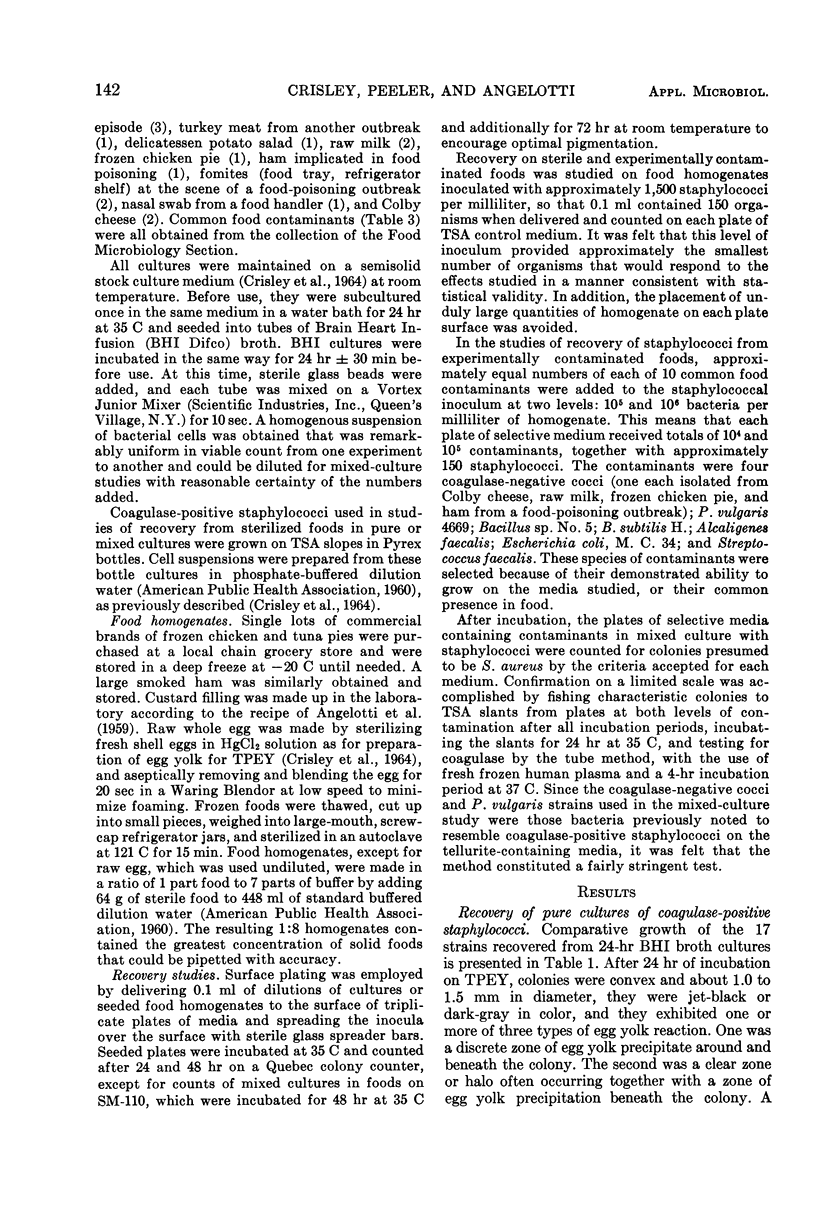
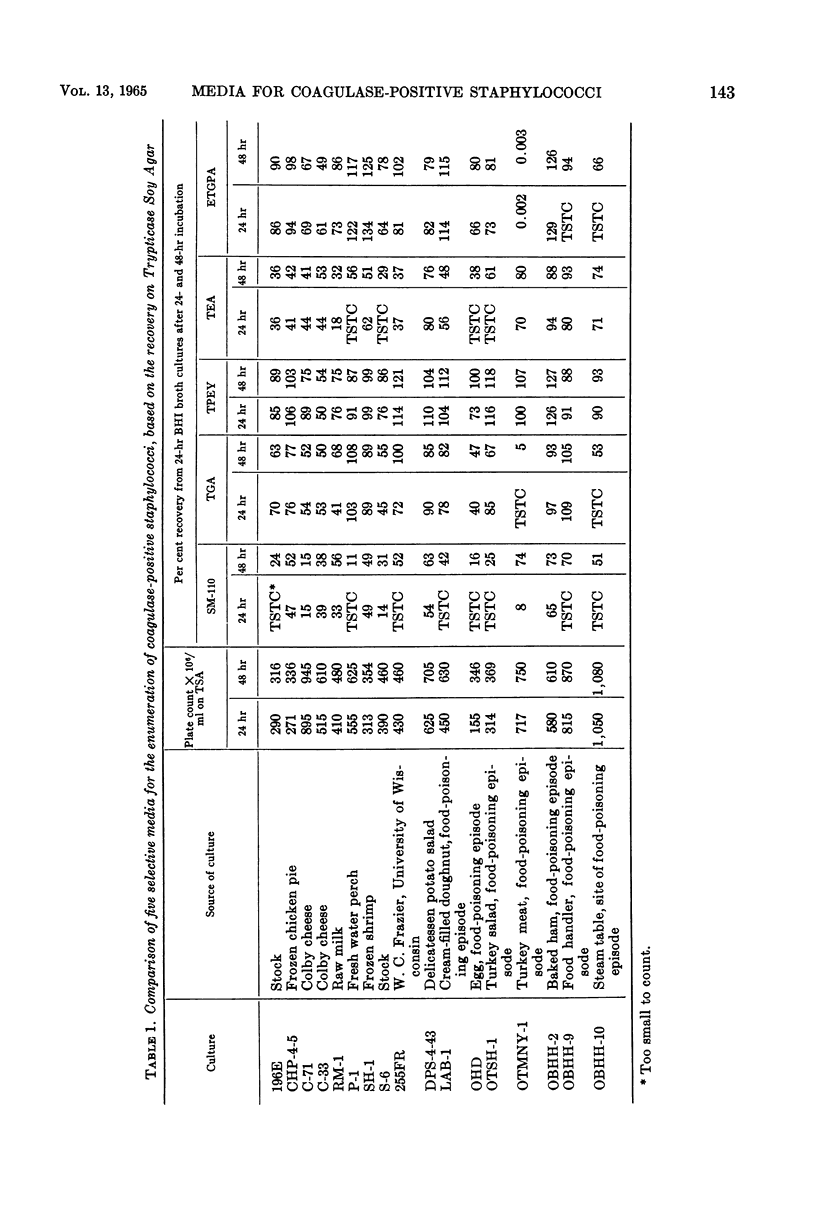
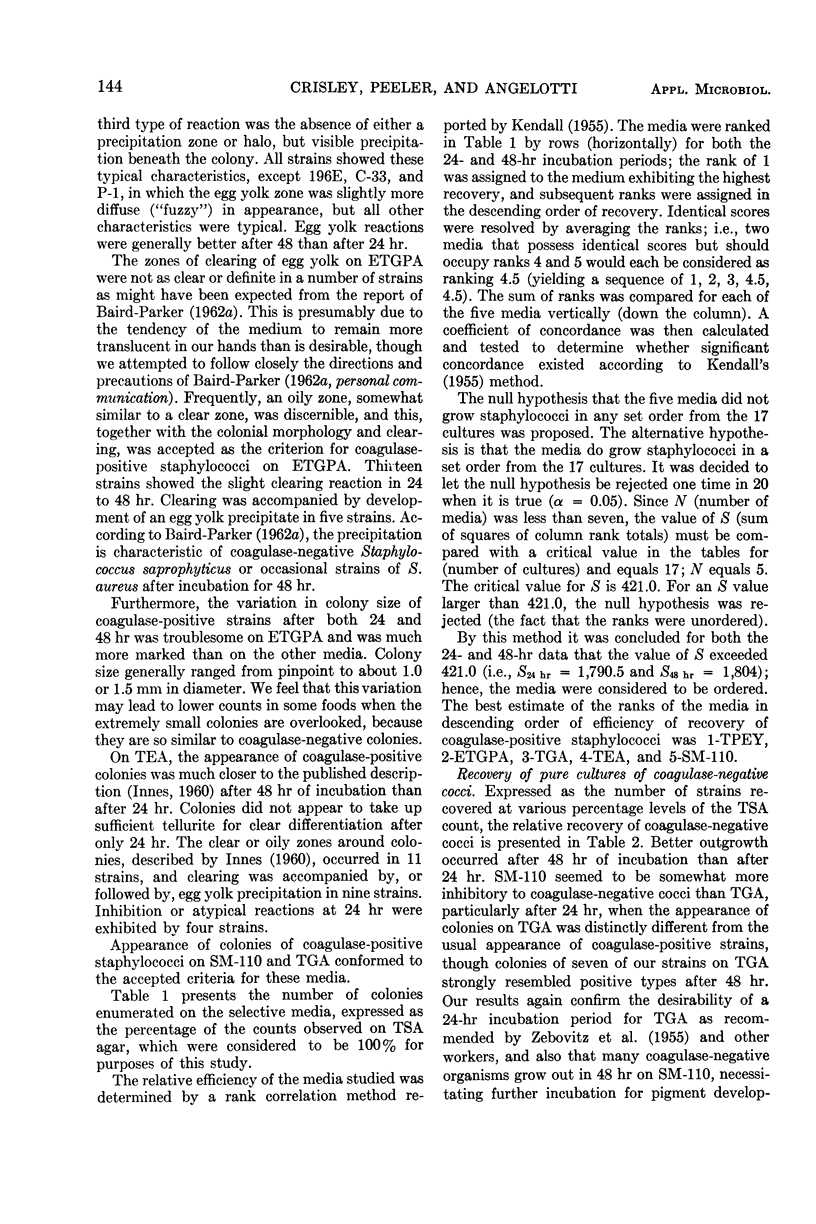
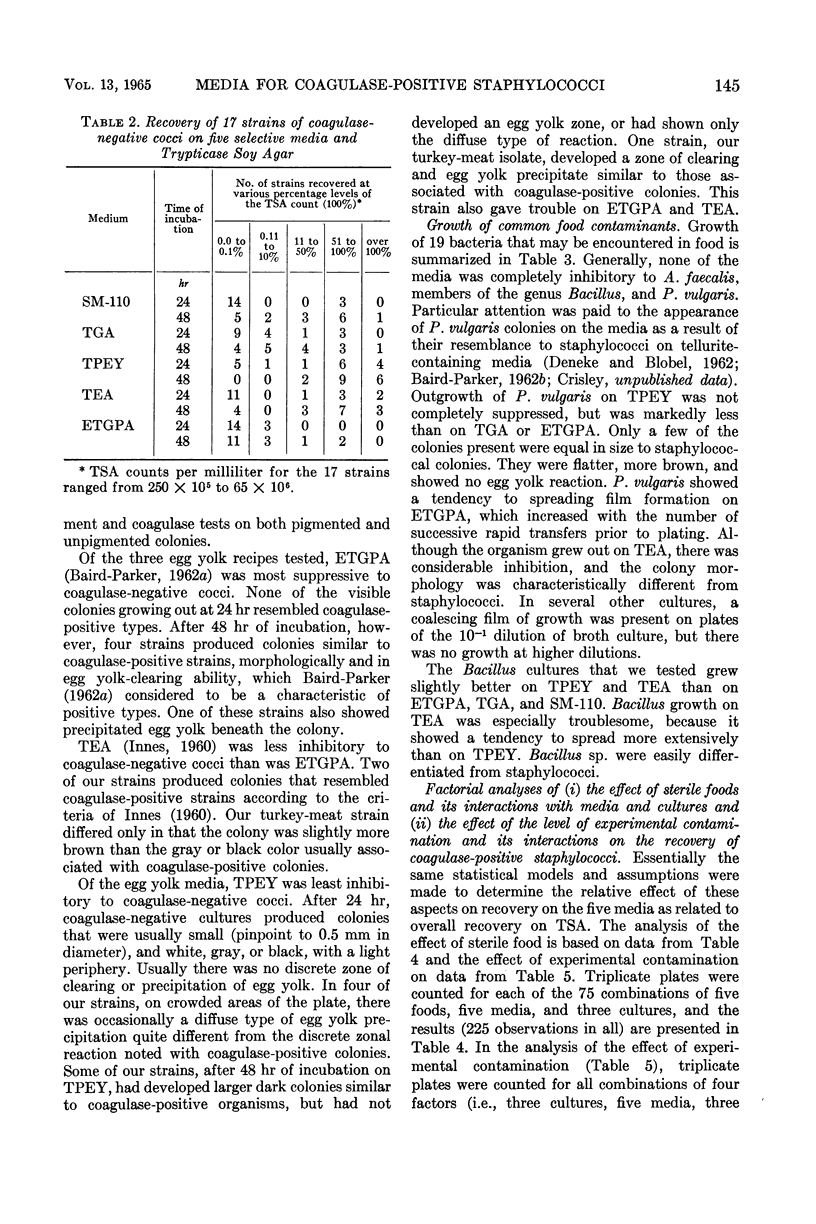
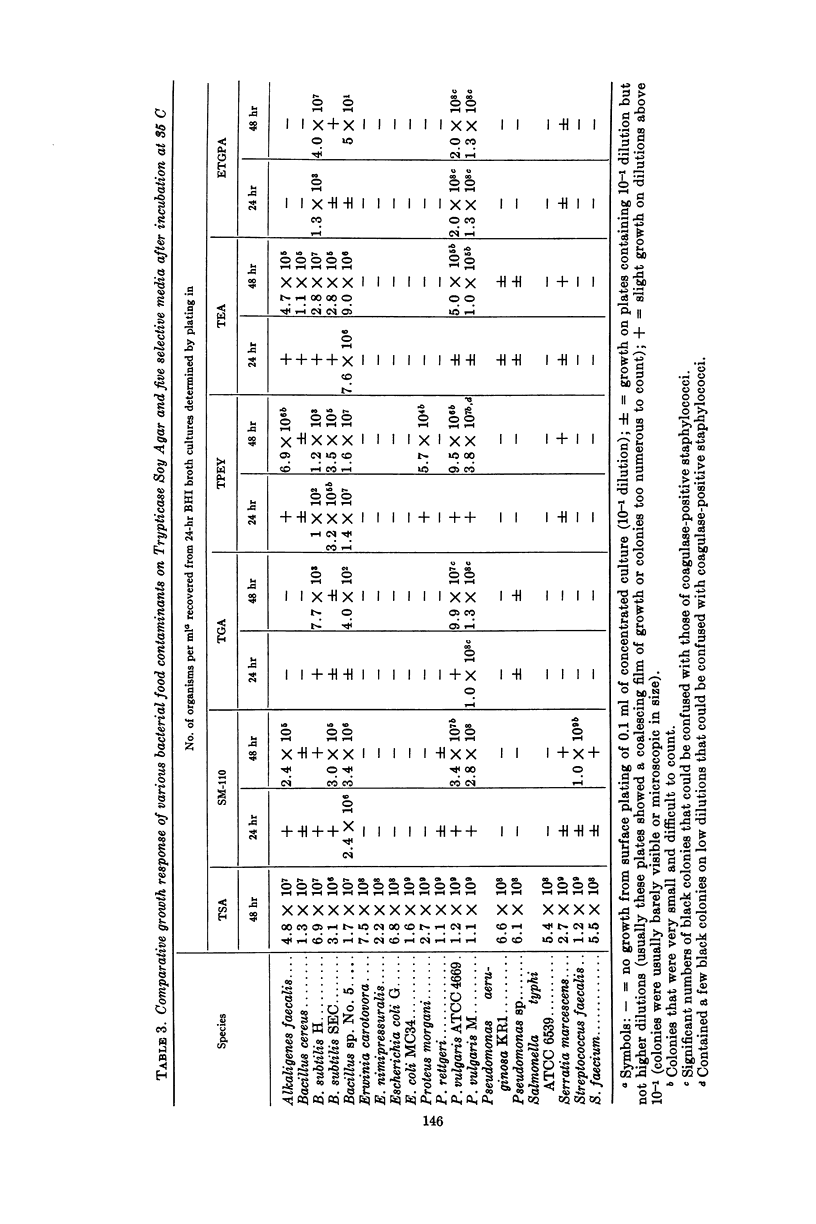
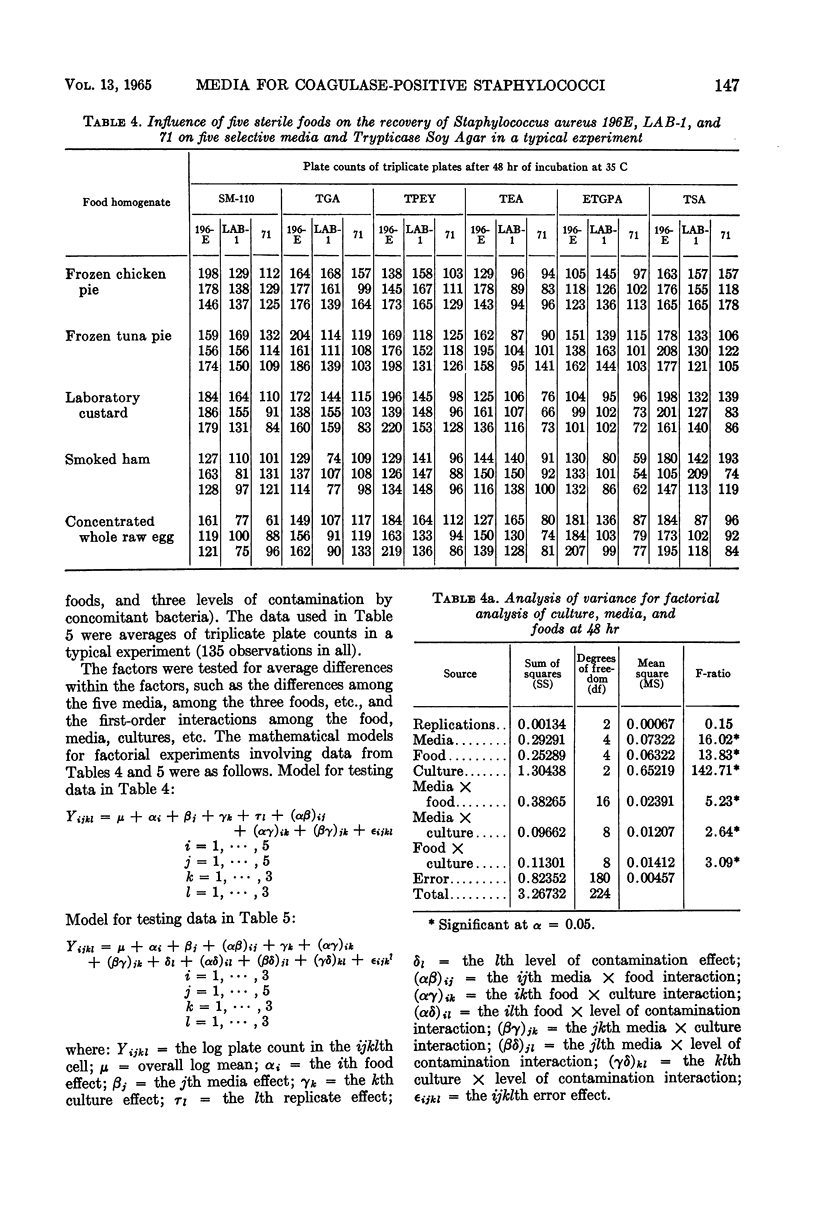
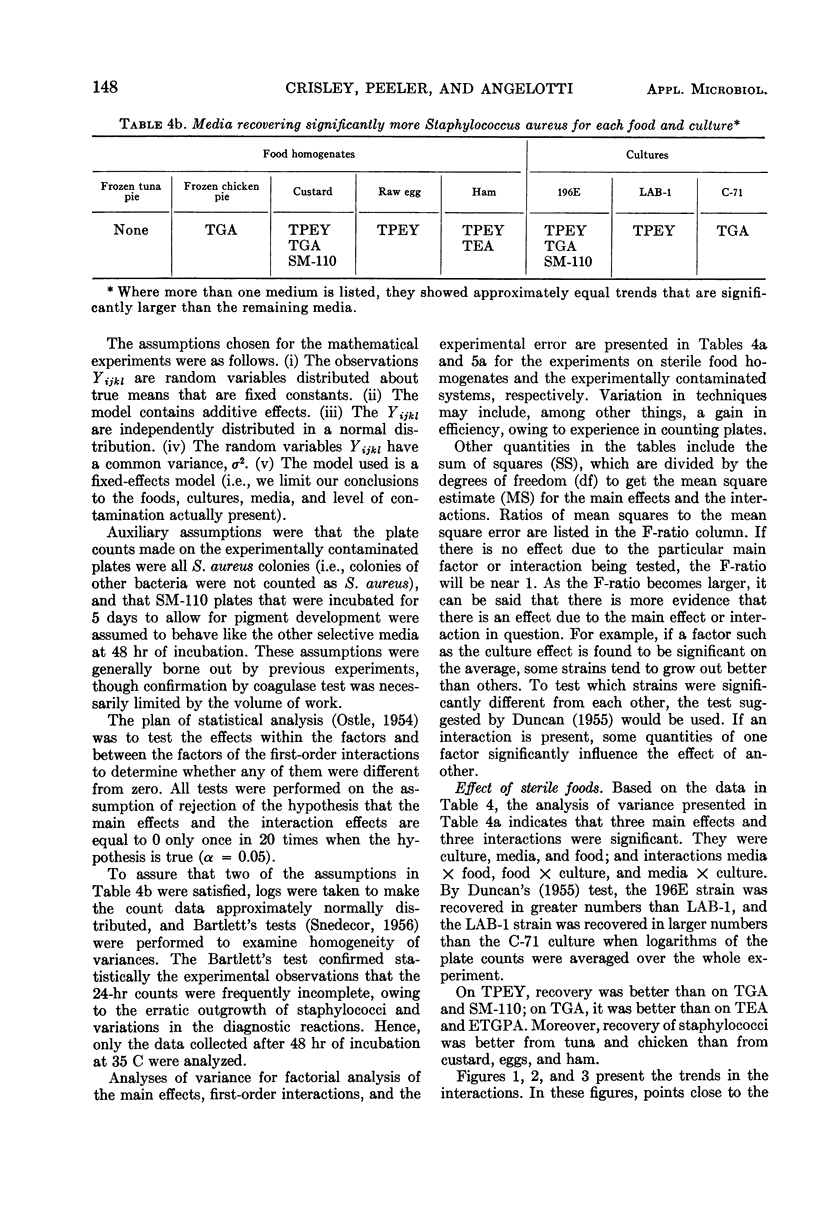
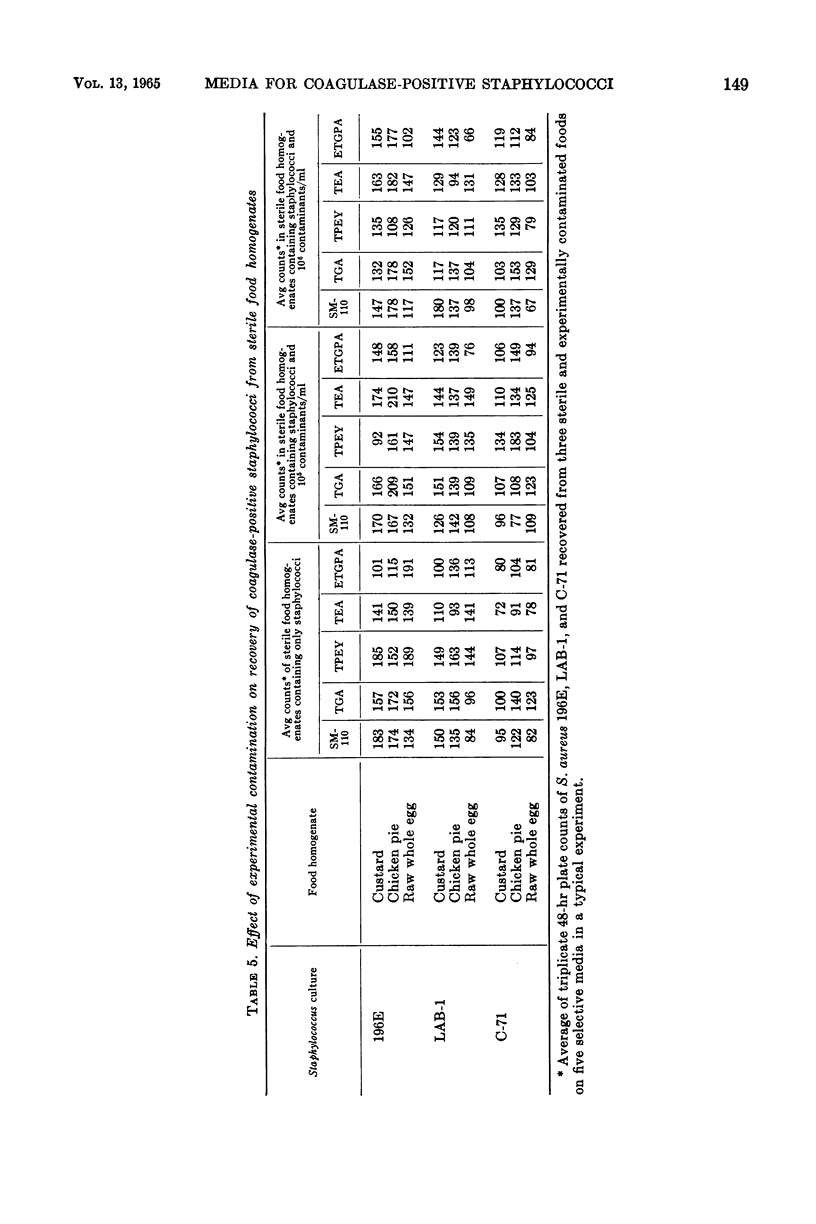
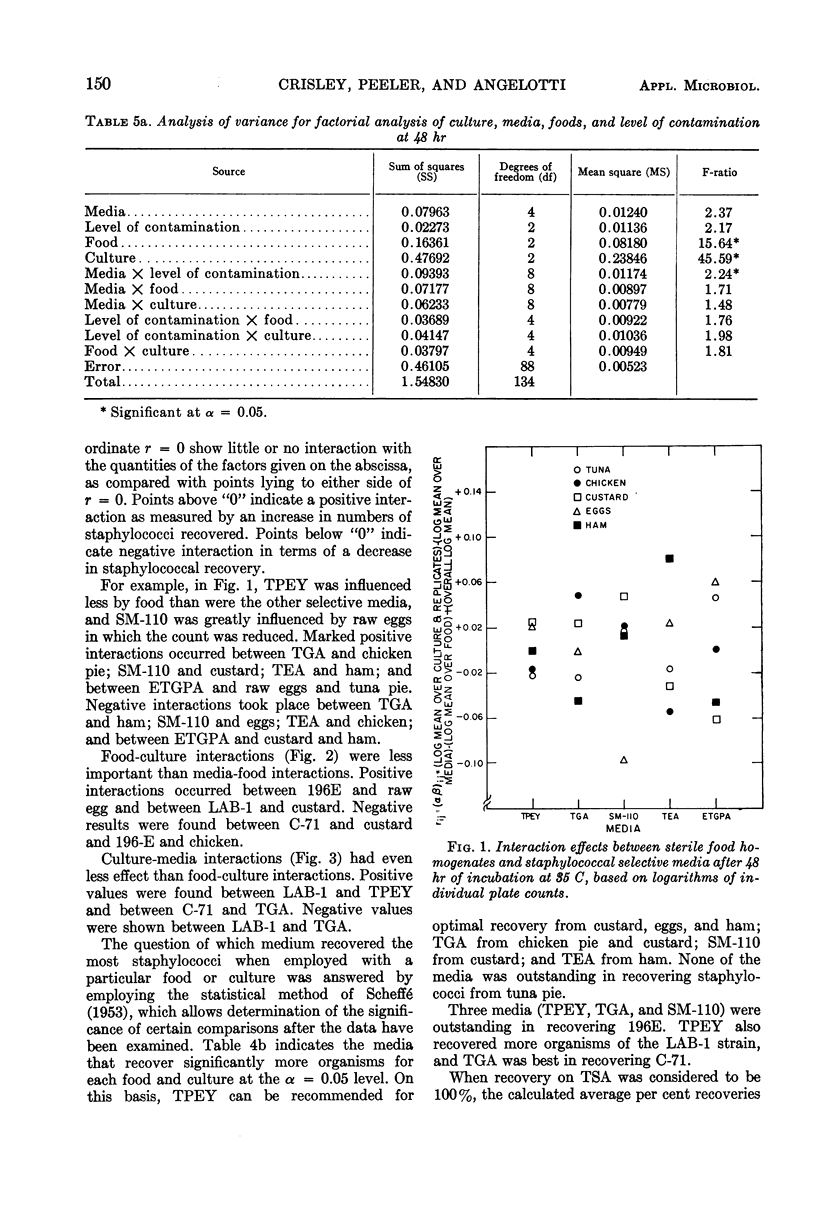
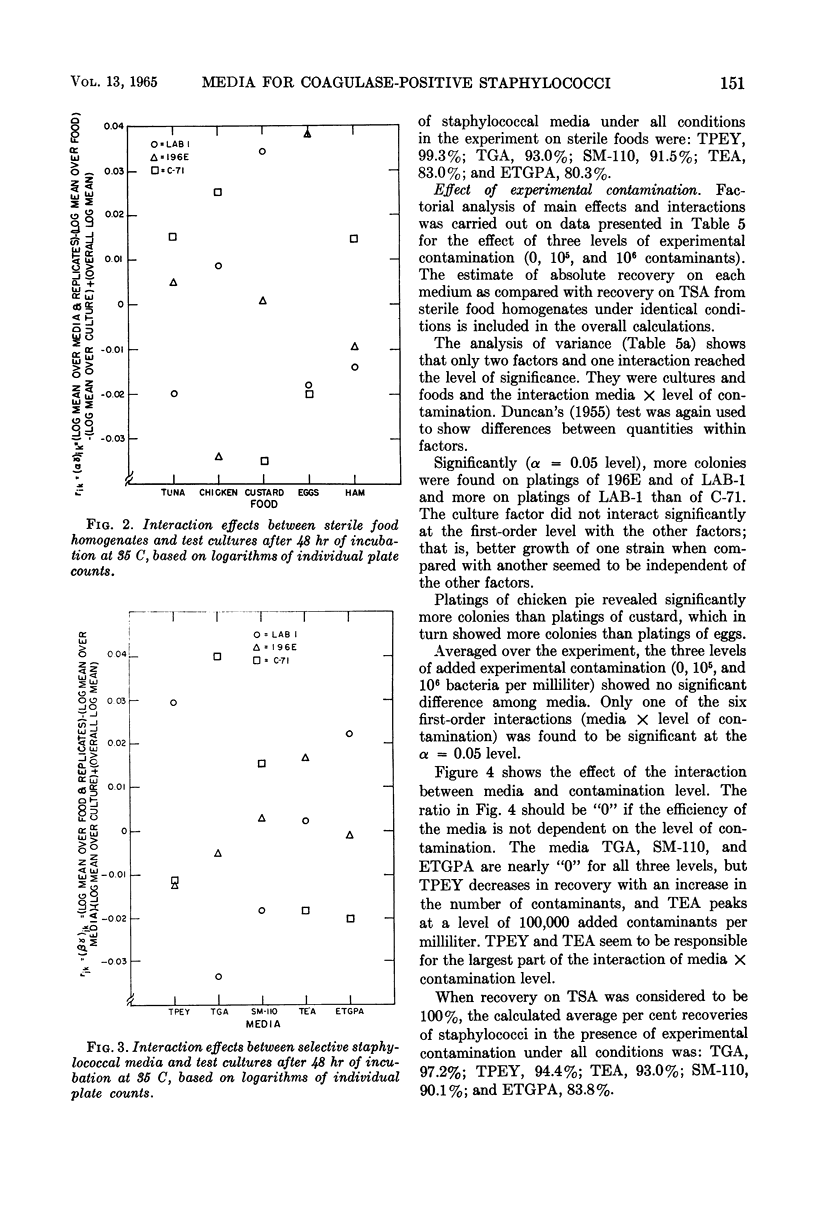
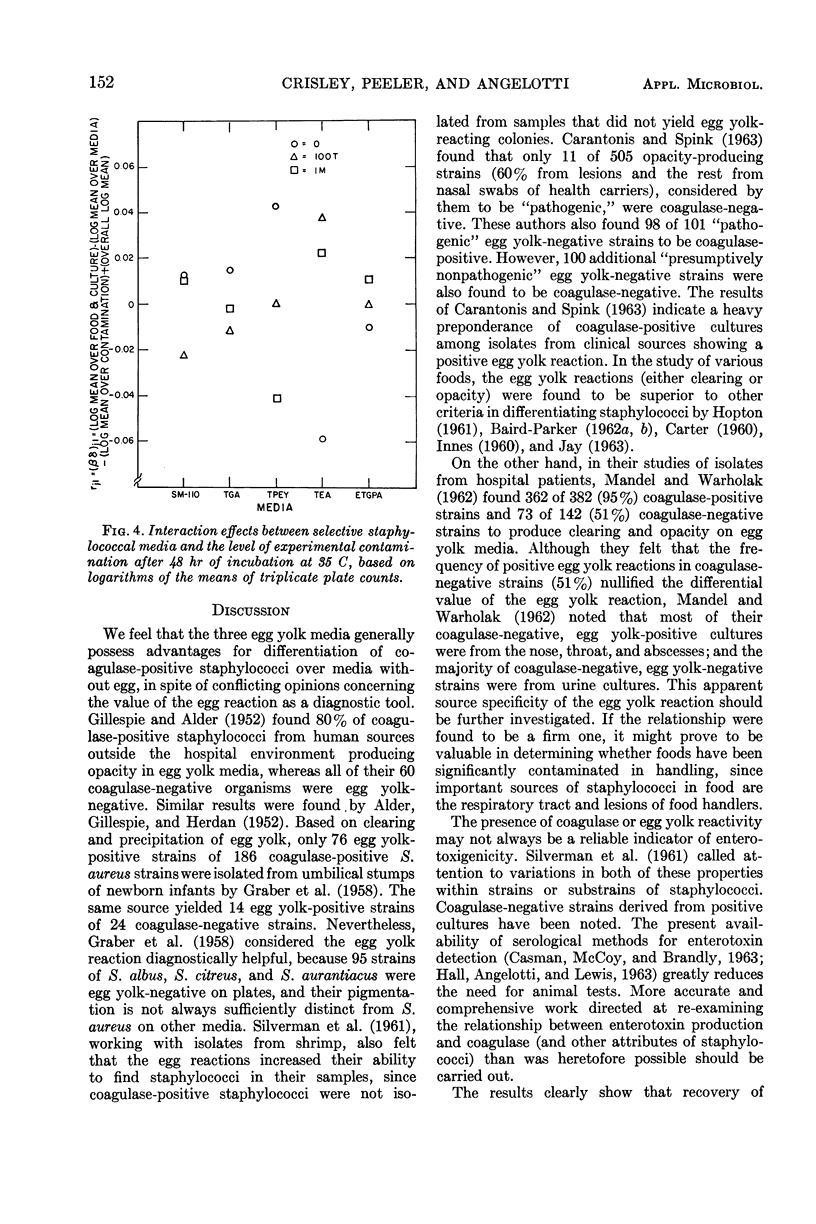
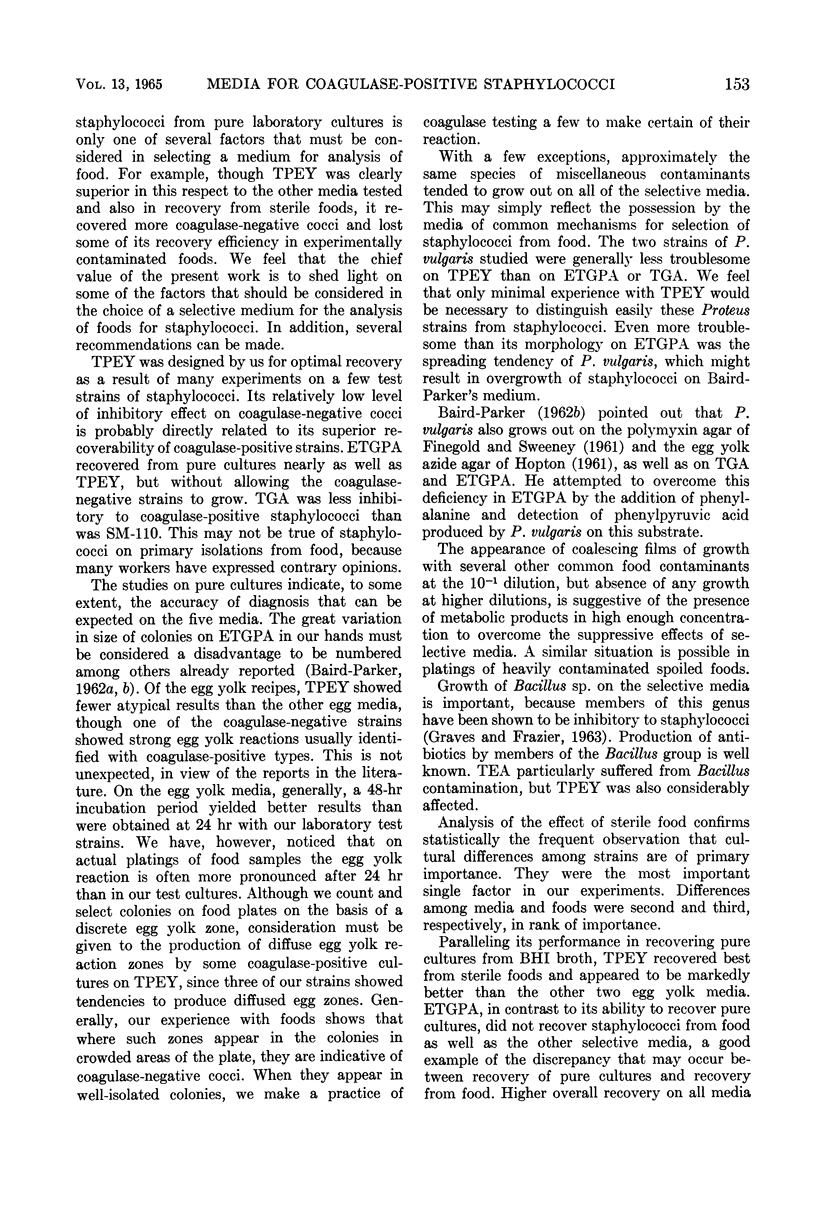
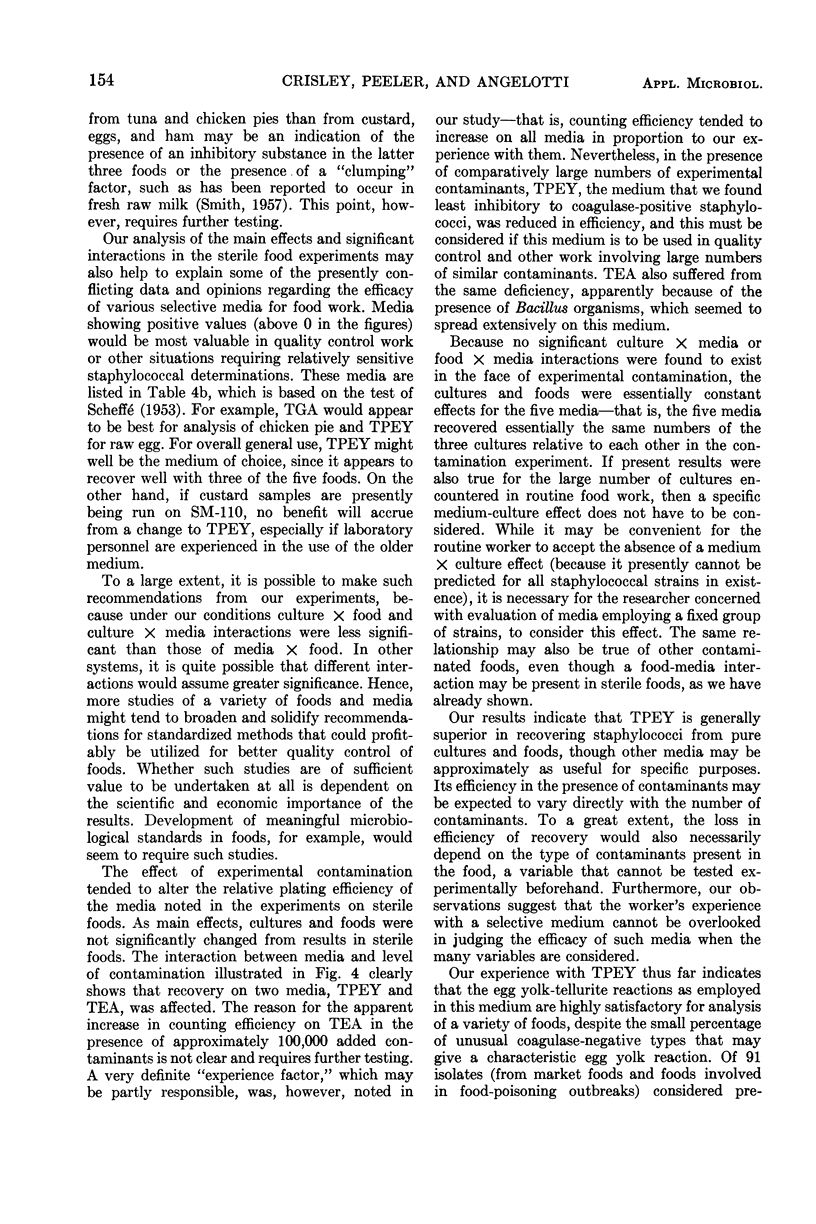
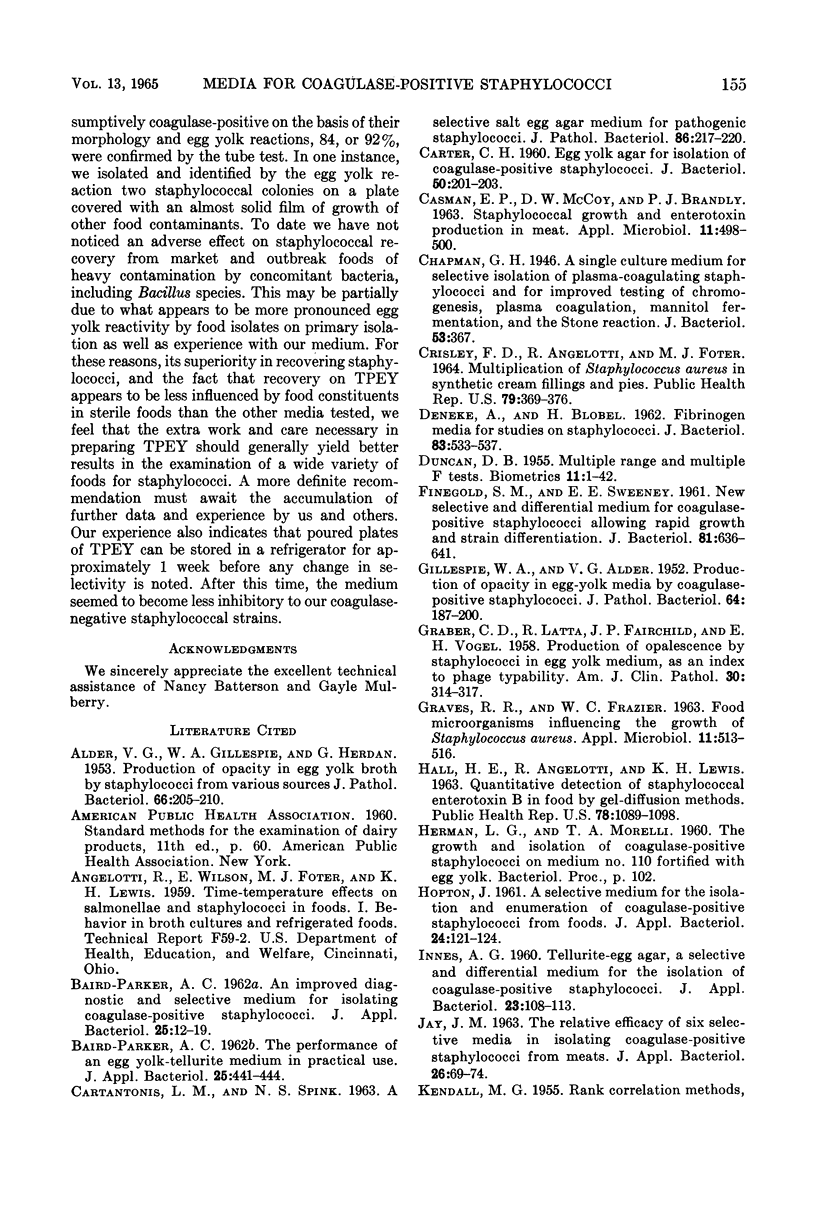
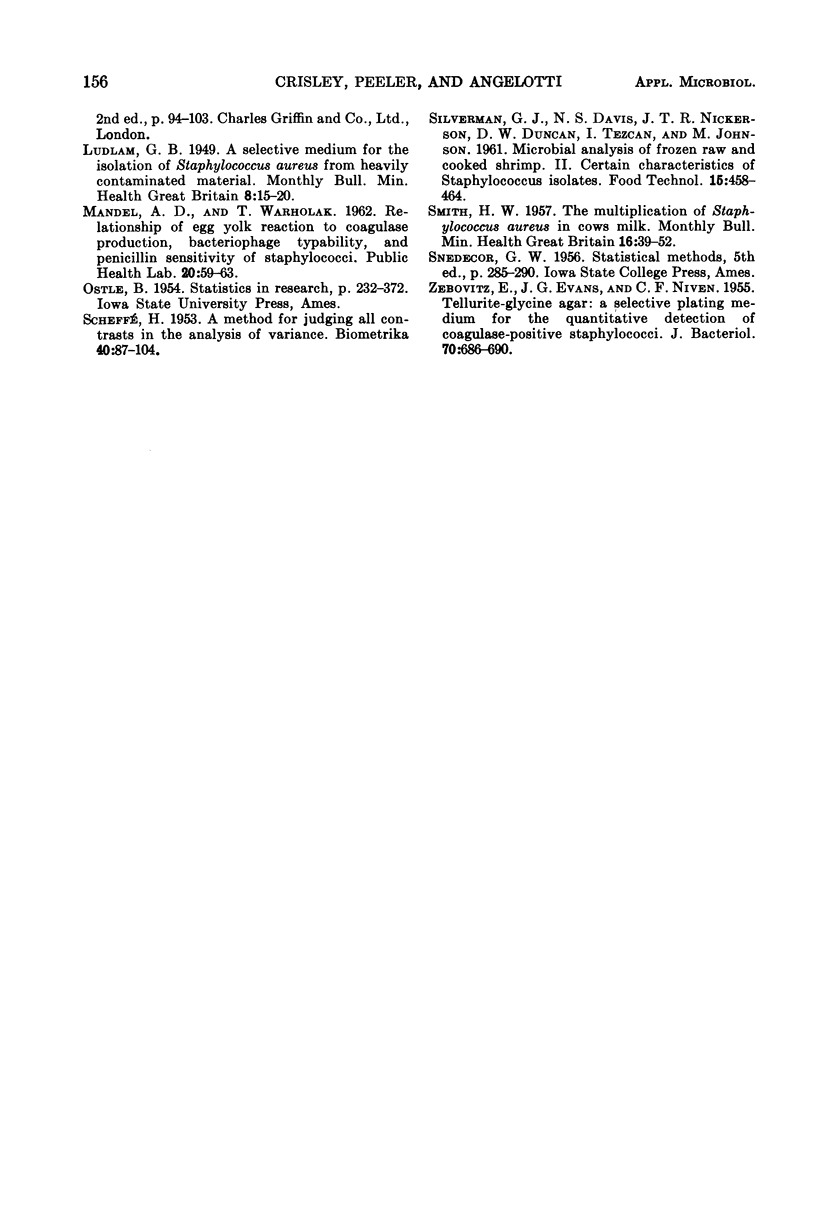
Selected References
These references are in PubMed. This may not be the complete list of references from this article.
- ALDER V. G., GILLESPIE W. A., HERDAN G. Production of opacity in egg-yolk broth by Staphylococci from various sources. J Pathol Bacteriol. 1953 Jul;66(1):205–210. doi: 10.1002/path.1700660123. [DOI] [PubMed] [Google Scholar]
- CARANTONIS L. M., SPINK M. S. A selective salt egg agar medium for pathogenic staphylococci. J Pathol Bacteriol. 1963 Jul;86:217–220. doi: 10.1002/path.1700860127. [DOI] [PubMed] [Google Scholar]
- CASMAN E. P., MCCOY D. W., BRANDLY P. J. STAPHYLOCOCCAL GROWTH AND ENTEROTOXIN PRODUCTION IN MEAT. Appl Microbiol. 1963 Nov;11:498–500. doi: 10.1128/am.11.6.498-500.1963. [DOI] [PMC free article] [PubMed] [Google Scholar]
- CRISLEY F. D., ANGELOTTI R., FOTER M. J. MULTIPLICATION OF STAPHYLOCOCCUS AUREUS IN SYNTHETIC CREAM FILLINGS AND PIES. Public Health Rep. 1964 May;79:369–376. [PMC free article] [PubMed] [Google Scholar]
- DENEKE A., BLOBEL H. Fibrinogen media for studies on staphylococci. J Bacteriol. 1962 Mar;83:533–537. doi: 10.1128/jb.83.3.533-537.1962. [DOI] [PMC free article] [PubMed] [Google Scholar]
- FINEGOLD S. M., SWEENEY E. E. New selective and differential medium for coagulase-positive staphlococci allowing rapid growth and strain differentiation. J Bacteriol. 1961 Apr;81:636–641. doi: 10.1128/jb.81.4.636-641.1961. [DOI] [PMC free article] [PubMed] [Google Scholar]
- GILLESPIE W. A., ALDER V. G. Production of opacity in egg-yolk media by coagulase-positive staphylococci. J Pathol Bacteriol. 1952 Jan;64(1):187–200. doi: 10.1002/path.1700640119. [DOI] [PubMed] [Google Scholar]
- GRABER C. D., LATTA R., FAIRCHILD J. P., VOGEL E. H., Jr Production of opalescence by staphylococci in egg yolk medium, as an index to bacteriophage typability. Am J Clin Pathol. 1958 Oct;30(4):314–317. doi: 10.1093/ajcp/30.4.314. [DOI] [PubMed] [Google Scholar]
- GRAVES R. R., FRAZIER W. C. FOOD MICROORGANISMS INFLUENCING THE GROWTH OF STAPHYLOCOCCUS AUREUS. Appl Microbiol. 1963 Nov;11:513–516. doi: 10.1128/am.11.6.513-516.1963. [DOI] [PMC free article] [PubMed] [Google Scholar]
- HALL H. E., ANGELOTTI R., LEWIS K. H. QUANTITATIVE DETECTION OF STAPHYLOCOCCAL ENTEROTOXIN B IN FOOD BY GEL-DIFFUSION METHODS. Public Health Rep. 1963 Dec;78:1089–1098. [PMC free article] [PubMed] [Google Scholar]
- ZEBOVITZ E., EVANS J. B., NIVEN C. F., Jr Tellurite-glycine agar: a selective plating medium for the quantitative detection of coagulase-positive staphylococci. J Bacteriol. 1955 Dec;70(6):686–690. doi: 10.1128/jb.70.6.686-690.1955. [DOI] [PMC free article] [PubMed] [Google Scholar]


